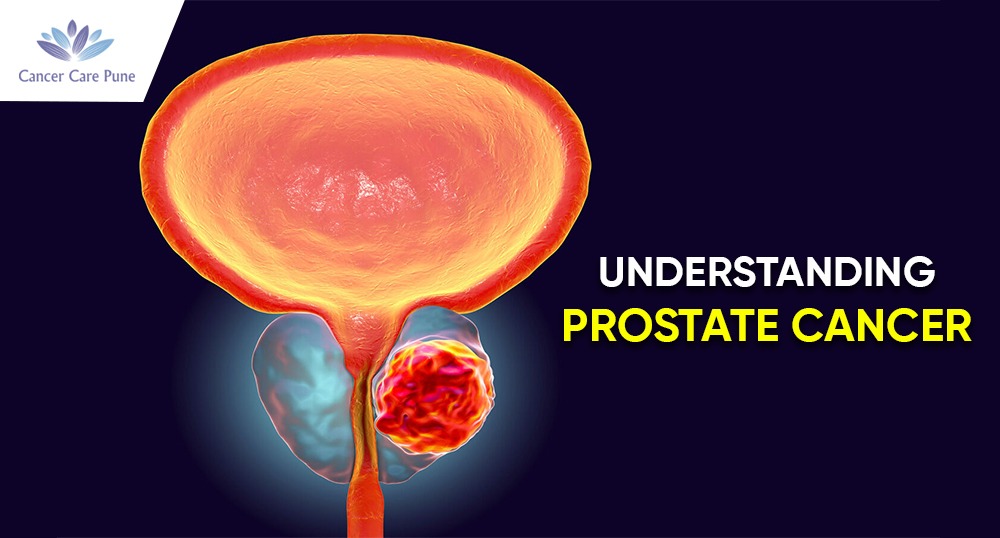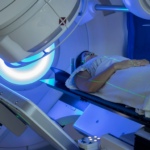
Prostate cancer is a type of cancer that develops in the prostate gland, which is a small gland located below the bladder in men. It is one of the most common types of cancer in men, and it typically develops slowly over time. In some cases, prostate cancer may not cause any symptoms or problems, while in other cases it may cause urinary difficulties, pain, or other issues. Treatment options for prostate cancer may include surgery, radiation therapy, hormone therapy, or chemotherapy, depending on the stage and severity of the cancer. Prostate cancer is one of the most common forms of cancer affecting men worldwide. The prostate gland is responsible for producing seminal fluid, which helps to nourish and transport sperm. Prostate cancer is typically slow-growing cancer, and many men may have it for years without experiencing any symptoms. In this blog, we will explore the causes, symptoms, diagnosis, and treatment of prostate cancer.
- Causes of Prostate Cancer
The exact cause of prostate cancer is unknown, but certain factors can increase a man’s risk of developing the disease. These risk factors include:
- Age: Prostate cancer is more common in men over the age of 50, and the risk increases with age.
- Family history: Men who have a close relative, such as a father or brother, who has had prostate cancer, have an increased risk of developing the disease.
- Ethnicity: Prostate cancer is more common in African-American men and less common in Asian and Hispanic men.
- Diet: A diet high in saturated fat and low in fruits and vegetables may increase the risk of prostate cancer.
- Obesity: Men who are overweight or obese may have an increased risk of developing prostate cancer.
- Symptoms of Prostate Cancer
In its early stages, prostate cancer may not cause any symptoms. As the tumor grows, it may cause the following symptoms:
- Difficulty urinating or a weak urine stream.
- Blood in the urine or semen.
- Pain or discomfort during ejaculation.
- Pain or discomfort in the pelvic area or lower back.
- Bone pain, especially in the hips and spine.
It is important to note that other conditions, such as an enlarged prostate or a urinary tract infection may also cause these symptoms. If you experience any of these symptoms, you should consult your doctor for further evaluation.
- Diagnosis of Prostate Cancer
If your doctor suspects you may have prostate cancer, they will perform a physical exam and may order additional tests, such as:
- Prostate-specific antigen (PSA) test: This blood test measures the level of PSA in your blood. PSA is a protein produced by the prostate gland, and elevated levels may indicate prostate cancer or other prostate problems.
- Digital rectal exam (DRE): In this exam, your doctor will insert a gloved, lubricated finger into your rectum to feel for any abnormalities in the prostate gland.
- Biopsy: If your PSA level is elevated or your DRE reveals an abnormality, your doctor may perform a biopsy. In this procedure, a small sample of tissue is removed from the prostate gland and examined under a microscope for the presence of cancer cells.
If prostate cancer is diagnosed, additional tests may be performed to determine the extent and stage of cancer.
- Treatment of Prostate Cancer
The treatment of prostate cancer depends on the stage and extent of cancer, as well as the patient’s overall health and preferences. Treatment options may include:
- Active surveillance: In some cases, prostate cancer may be slow-growing and not require immediate treatment. Instead, your doctor may recommend active surveillance, which involves regular monitoring of your PSA levels, DREs, and possibly repeat biopsies.
- Surgery: Surgery to remove the prostate gland, called a prostatectomy, may be recommended in some cases of prostate cancer. There are several surgical approaches, including open surgery, laparoscopic surgery, and robot-assisted surgery.
- Radiation therapy: Radiation therapy uses high-energy beams to kill cancer cells. It may be used as the primary treatment or after surgery to kill any remaining cancer cells.
- Hormone therapy: Prostate cancer cells require testosterone to grow. Hormone therapy works by blocking the production or action of testosterone, which can slow the growth of prostate cancer cells. Hormone therapy may be used in combination with other treatments or as a primary treatment for advanced prostate cancer.
- Chemotherapy: Chemotherapy uses drugs to kill cancer cells. It may be used in advanced cases of prostate cancer when other treatments are no longer effective.
- Immunotherapy: Immunotherapy works by stimulating the immune system to attack cancer cells. It is a newer treatment option for prostate cancer and may be used in combination with other treatments.
In addition to these treatments, there are also several clinical trials testing new treatments for prostate cancer. It is essential for patients to discuss their treatment options with their doctors and to consider their own preferences and values when making treatment decisions.
- Prevention of Prostate Cancer
While there is no sure way to prevent prostate cancer, there are several steps men can take to reduce their risk, including:
- Eating a healthy diet: A diet high in fruits, vegetables, and whole grains and low in saturated fat may reduce the risk of prostate cancer.
- Maintaining a healthy weight: Being overweight or obese may increase the risk of prostate cancer.
- Exercising regularly: Regular exercise may reduce the risk of prostate cancer.
- Getting screened: Men over the age of 50, or men with a family history of prostate cancer, should discuss prostate cancer screening with their doctor.
- Quitting smoking: Smoking has been linked to an increased risk of prostate cancer.
Conclusion
Prostate cancer is a common form of cancer affecting men worldwide. While the exact cause of prostate cancer is unknown, several risk factors have been identified, including age, family history, ethnicity, diet, and obesity. Prostate cancer may not cause any symptoms in its early stages, but as cancer grows, it may cause difficulty urinating, blood in the urine or semen, pain or discomfort during ejaculation, and bone pain. If prostate cancer is suspected, tests such as the PSA test, DRE, and biopsy may be performed to make a diagnosis. Treatment options for prostate cancer include active surveillance, surgery, radiation therapy, hormone therapy, chemotherapy, and immunotherapy. While there is no sure way to prevent prostate cancer, men can take steps to reduce their risk, such as eating a healthy diet, maintaining a healthy weight, exercising regularly, getting screened, and quitting smoking. It is important for patients to discuss their treatment options with their doctors and to consider their own preferences and values when making treatment decisions.




